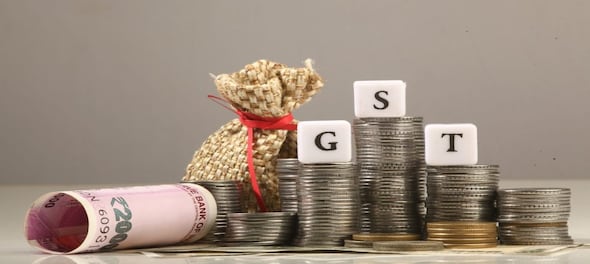
The revenue from Goods & Services Taxes (GST) for the month of August has again been impressive. At Rs.1.43 lakh crore it is 28 percent higher than the revenue in the corresponding month of 2021. The August revenue is marginally lesser than the revenue of July 2022 by about 4 percent. It however is the sixth consecutive month where the GST revenue has crossed the Rs 1.4 lakh mark.
IGST from import continues to be the single largest component of the GST revenue. At Rs 42,067 crore it is more than the IGST revenue from imports in July 2022.
It is important to place the performance of the GST revenue in perspective.
The latest data from the National Statistical Office (NSO) estimates real GDP at constant ( 2011-12 ) prices to be at a level of Rs 36.85 lakh crore in Q1 2022-23 .This is as against Rs 32.46 lakh crore in Q1 of 2021-22. This is a growth of about 13.5 percent. Similarly, nominal GDP at current prices in Q1 2022-23 is estimated at Rs 64.95 lakh crore, as against Rs 51.27 lakh crore in Q1 2021-22, showing a growth of 26.7 percent .
The GVA at basic prices for Q1 (April-June) 2022-23 (at 2011-12 prices) across the major sectors have shown an overall growth of 12.7 percent. Most of the major economic indicators have shown an increase except for a fall in telephone subscribers, cargo handled at airports and a drop in the IIP data relating to minerals. The wholesale price inflation (WPI) at 15.7 percent for all commodities is high.
ALSO READ: CBIC says FTA provisions to prevail in case of conflict over Rules of Origin on imported goods
The combined Index of eight core industries increased by 4.5 per cent (provisional) as compared to the Index of July 2021. The production of Coal, Refinery Products, Fertilizers, Steel, Electricity and Cement industries increased in July 2022 over the corresponding period of last year.
The manufacturing PMI for August at 56.2 is very close to the high of 56.4 achieved in July 2022 suggesting sustained economic activity. Similarly it is likely that services PMI will be better than the July figure of 55.5 .
Credit off take has been good and expanded by 14 percent (y-o -y). As the RBI data shows, Gross Non-Performing Assets (GNPAs) of India’s banking system have steadily fallen from 11.2% of advances in March 2018 to 5.9 percent of advances in March 2022.
The performance of the corporate sector has in the quarter been good. However there is undeniable impact of the base effect. In fact as economic columnists have pointed out this is also true for the improvement in GDP numbers.
Thus , there has been steady improvement in the economy which the GST revenue is also reflecting. Having said that we should not lose sight of the fact that there are also several worrying factors at play.
The merchandise exports (absolute) in August at $33 billion is lower than the six-month low of July. Imports at $61.68 billion were also lower than the July imports but again above $60 billion for the sixth straight month. The trade deficit for the month being $26.8 billion; and for the April-August period a very troubling $122.2 billion. The rupee continues to be weak with RBI having to step in repeatedly.
Vehicle registrations for light and medium passenger vehicles, as well as two-wheelers, dipped marginally in July. Typically, this should improve as we head towards the festive season. Power consumption, reflective of overall economic activity, also slowed in July compared with June amid widespread rains in the country. Unemployment rose to 8.3 percent; sequentially it fell by 2 million to 394.6 million.
Both fiscal and current account deficit are matters of concern. Fiscal deficit for Q1 FY23 has reached 21.2 percent of the annual target compared to 18.2 percent in Q1FY22.
SBI research have suggested that nearly 8 percent of the increase in GST revenue can be attributable to inflation. As pointed out in their paper consumer price index (excluding fuel ) and GST have moved more or less together prior to the pandemic. The gap between the two started increasing since May 2020 with a significant difference between the two since mid-2021.
Global growth is slowing down.
Global uncertainty has been increasing-the Russian-Ukraine conflict, China-Taiwan tensions and the consequential impact on supply chains. Central Banks across the world have been tightening controls-the spectre of inflation is real The Fed has indicated that it will continue on this policy path. IMF in its July 2022 outlook had revised the global GDP growth projection lower by 0.4 percentage points to 3.2 percent for 2022.
So, they are mixed signals. GST revenue should continue to do well. However for this to happen the focus should continue to be on improving compliance, simplification of processes and ensuring that technology works efficiently. Data Analytics leading to effective enforcement and audit will continue to be a key factor. Evasion of taxes should be dealt with sternly. We cannot afford to slip up on the indirect tax revenue front.
— Najib Shah is a former chairman of the Central Board of Indirect Taxes & Customs. The views expressed in this article are his own.
(Edited by : Anshul)
First Published: Sept 5, 2022 6:16 PM IST
Check out our in-depth Market Coverage, Business News & get real-time Stock Market Updates on CNBC-TV18. Also, Watch our channels CNBC-TV18, CNBC Awaaz and CNBC Bajar Live on-the-go!



